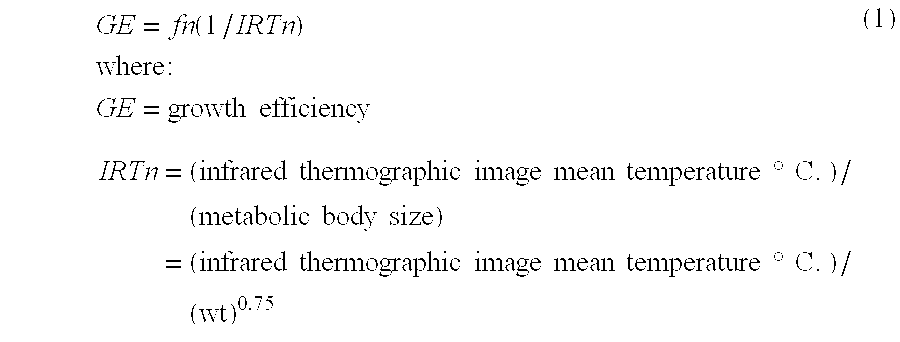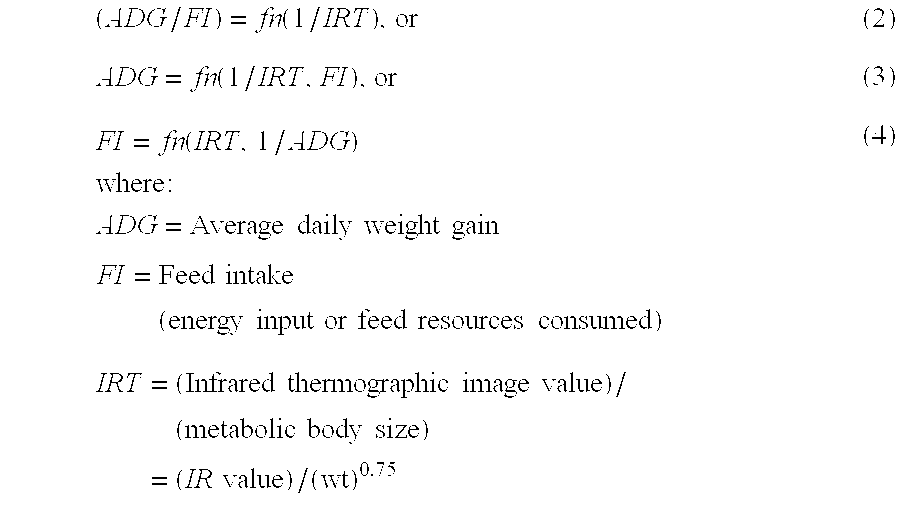Use of infrared thermography in live animals to predict growth efficiency
a technology of infrared thermography and live animals, applied in animal husbandry, material testing goods, analog and hybrid computing, etc., can solve the problems of difficult to achieve with non-human subjects, difficult to ascertain when they are in a post-absorptive state, and high energy consumption, so as to reduce variation in marketing outcomes and high growth efficiency. , the effect of high growth efficiency
- Summary
- Abstract
- Description
- Claims
- Application Information
AI Technical Summary
Benefits of technology
Problems solved by technology
Method used
Image
Examples
example 1
Effect of Environmentally Induced Changes in Metabolic Heat Production and Growth Efficiency
Animals and Housing
[0098] Eighteen yearling crossbred heifers of approximately 370 kg body weight raised at the Agriculture and Agri-Food Canada Lacombe Research Centre (Lacombe, Alberta, Canada) were used for the study. The animals were housed in appropriate environmental chambers (Metabolic Laboratory, Department of Agricultural Food and Nutritional Sciences, University of Alberta, Edmonton, Canada). The feed consisted of balanced pelleted alfalfa based ration consisting of 88.7% dry matter, 2.87 MJ NE / kg with 12% crude protein (values expressed on an as-fed basis). The ration also contained 0.02% Rumensin™ to prevent bloating and 0.025% MGA® (a synthetic estrogen) to prevent estrus during the experiment.
Procedure
[0099] The animals were randomly allocated to one of two treatment groups, with 9 animals in each group. The treatments were as follows: [0100] a) Cold ad libitum (CAL), wher...
PUM
 Login to View More
Login to View More Abstract
Description
Claims
Application Information
 Login to View More
Login to View More - R&D
- Intellectual Property
- Life Sciences
- Materials
- Tech Scout
- Unparalleled Data Quality
- Higher Quality Content
- 60% Fewer Hallucinations
Browse by: Latest US Patents, China's latest patents, Technical Efficacy Thesaurus, Application Domain, Technology Topic, Popular Technical Reports.
© 2025 PatSnap. All rights reserved.Legal|Privacy policy|Modern Slavery Act Transparency Statement|Sitemap|About US| Contact US: help@patsnap.com



